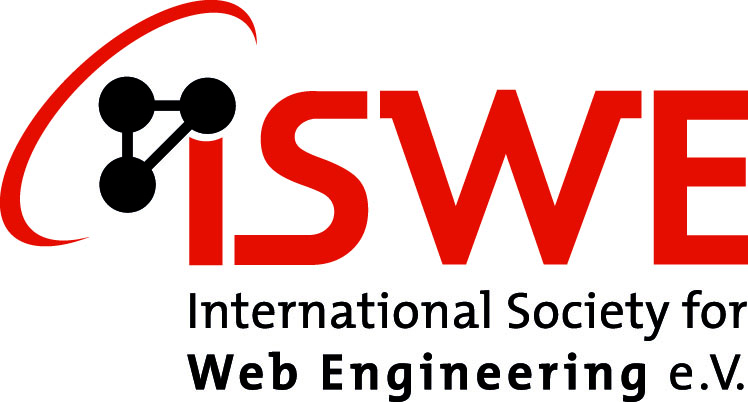Web application modeling and engineering
- Analytical approaches for engineering Web applications
- Conceptual modeling
- Design patterns and architectural patterns for Web applications
- Distributed Web user interfaces
- Domain-specific languages
- Executable models
- Model federation, transformation and analysis
- Model-driven engineering frameworks, methods, processes and tools
- Processes and methods for engineering Web applications
- Reverse engineering and re-engineering of Web applications
- Web content modeling, management and evolution
- Web service engineering
- Web user interface design for novel interaction paradigms
Crowdsourcing and Human Computation
- Crowd engagement and activation strategies
- Crowd search and Crowd sensing
- Crowd workflow definition and management
- Design of collective intelligence and crowdsourcing applications
- Efficiency of hybrid-human machine systems
- Human computation and crowdsourcing task design
- Niche-sourcing and expert-sourcing in social platforms
- Methods for quality assurance in crowdsourcing and human computation tasks
- Optimization methods for crowdsourcing and human computation campaigns and workflows
- Use cases and experiences with human computing and crowdsourcing applications
- Task search in crowdsourcing platforms
- Visualization and Quality of Experience in/for human computation and crowdsourcing tasks
Web Composition and Mashup
- Benchmarks for mashup tool performance and expressiveness
- Cloud integration
- Domain-specific mashup approaches
- End-user programming for mashup development
- Inter-organizational Web applications: Mashups within enterprises and across enterprises
- Lightweight data, application, and UI integration
- Mashup development and end-user Web programming
- Mashup evolution
- Mashup quality assessment
- Mashups of Linked Data services
- Mobile mashups
- Model-driven mashup engineering
- Semantic Web services for automatic service composition
- Visual and non-visual mashup development metaphors and approaches
- Web composition models, languages and technologies
Social Web
- Analysis, structure, and dynamics of social networks
- Community discovery and link prediction
- Content customization and adaptation on/using the Social Web
- Multilingual aspects of the Social Web
- Privacy, security, reputation, and trust management on the Social Web
- Query languages for the Social Web
- Social applications in enterprise environments
- Social applications of the semantic and mobile Web
- Social Web applications interoperability
- Social Web mining and search
- Social Web systems design, architectures, and computational models
- User generated content and recommender systems
- User modeling for/using the Social Web
Semantic Web
- (Big) Linked Data Application and Mashup Engineering
- Access Control for the Semantic Web: provenance, security, privacy, and rights management
- Analysis, Mining and visualization of Linked Data
- Cloud computing for the Semantic Web
- Creation and management of Linked Data vocabularies
- Data quality and data trustworthiness
- Frameworks and infrastructures for building Semantic Web applications
- Information Systems Architecture for Semantic Web
- Linked Data publishing & consumption frameworks
- Linking of data and artefacts in the software development lifecycle
- Methodologies for parallel software and data engineering of Web-scale information systems
- Mobile Semantic Web applications
- Semantically enabled social platforms and applications: wikis, forums, portals, blogs and microblogs, etc.
- Stream computation for the Semantic Web
- Usability of Semantic Web applications
Web of Things
- Applications, Use cases, and Experiences with Web of Things systems
- Cloud platforms and services for the Web of Things
- Context recognition methods (e.g. activity recognition, social-context recognition) with Web Of Things technology
- Design methods, architectures, and computational models for Web of Things systems
- Integrating and exploiting novel sources of (social) data from Web of Things devices (e.g. home sensors, wearable sensors, smart textile technologies, etc.)
- Security, privacy, access control, and sharing of physical things on the Web
- Semantic Web and the Web of Things
- Social interactions and behavior analysis for Web of Things applications fields
- Social Web and the Web of Things
- Web-based discovery, search, composition, and physical mashups










